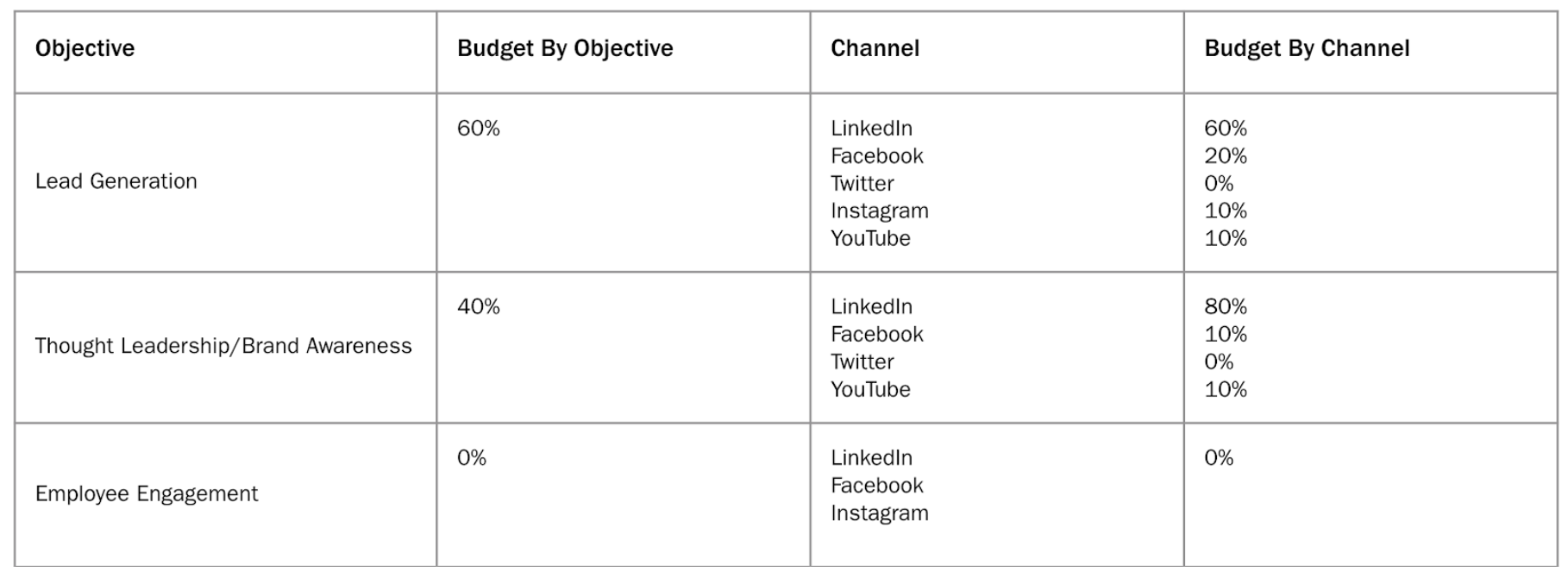5 Key Elements of an Effective Social Media Playbook
A social media playbook outlines one consistent set of guidelines your marketing team can follow to ensure you execute your social media strategy effectively and achieve your goals. A comprehensive playbook includes a content strategy, content production plan, community management standards, a measurement strategy and a tactical plan for implementation. While there may be a case for additional components based on your business objectives, these five elements are the foundational building blocks of an effective social media playbook.
Content Strategy
A good social media playbook is built on the foundation of clear and measurable objectives, a well-defined target audience, and an understanding of which channels are best suited to reach them. Start by documenting your goals and determining who you need to influence to achieve them. Once you know who you are trying to reach, you can determine which channels you should leverage to deliver your content. This exercise will uncover something marketers often get wrong. Each channel should have a unique content strategy because certain platforms will be better equipped to reach certain segments of your target audience.
In addition to the type of content you intend to publish on each channel, a thorough content strategy will also include a plan for budget allocation. We recommend detailing this in percentages instead of fixed numbers, knowing budgets are liable to shift throughout the year. There are two ways to think about segmenting your budget. The first is based on objective. If you have a clear understanding of your goals and how important each of them is to the business, this part is a no brainer. Make sure the majority of your budget is allocated to the goal that has the most impact on the overall business. The second is a breakdown of how the budget is distributed by channel within each objective. Based on the work you did to establish your content strategy, you’ll already know which channels to prioritize for each goal.
Content Production
At this point, you’ll be ready to put your content strategy into action. This section of the social media playbook should include practical tools that create efficiencies in your content production workflow. Start by reviewing your top competitors’ posting frequency to establish some publishing benchmarks and determine how often you should be posting to each channel to achieve your goals and remain competitive. We look at competitor benchmarks not with the assumption that they are doing it right, but as a way to identify trends across multiple competitors. This allows you to understand your audience’s expectations for content and exceed them.
Next, you’ll develop a handful of content planning resources that will ensure the integrity of your content strategy stays intact when you begin publishing content across various channels. We recommend developing a monthly content calendar template to ensure all areas of the content strategy are represented and you’re hitting your publishing cadence. In order to flesh out the monthly content calendar with actual content, we recommend maintaining an annual editorial calendar that includes key events, initiatives, and activities happening across various departments within the organization.
Community Management
By now, we’re all in agreement that social media is a two-way street, designed to engage your audience and build relationships. This is why the next section of your playbook is dedicated to managing your online community. There are three core aspects of community management on social media. While most organizations are already prioritizing social monitoring, sophisticated marketers are also tapping into the power of social listening and taking it a step further with social engagement.
Your social media playbook should include a set of standards for responding to incoming notifications and messages. It should be clear to your team how quickly they need to reply and provide some templated on-brand messaging that addresses frequently asked questions. In addition to fielding solicited inquiries, the social media playbook should also outline hashtags and keywords to monitor via social listening, mining these threads for opportunities to engage in relevant online conversations that don’t mention your brand directly.
Measurement
There are two types of measurement to consider when evaluating the impact of your social media strategy. Macro level reporting focuses on the metrics internal stakeholders at the executive level will be interested in. This data demonstrates how social media has contributed to achieving broader business objectives. Micro level reporting focuses on the more granular metrics that indicate content performance. This data is used by the tactical team to inform overall strategy and content direction. Your social media playbook should include specific macro and micro level KPIs that demonstrate success for each objective you identified when developing your content strategy.
Process & Implementation
Your social media playbook is merely a document on the shelf if you don’t put it into practice. Review the playbook in its entirety and identify the tasks your team will need to execute on a regular basis to implement your social media strategy successfully. We recommend breaking this down into a quarterly, monthly, weekly and daily checklist. From here, create an annual roadmap that illustrates what your social media process will look like when your team is firing on all cylinders.
When creating your own social media playbook, it’s important to take an inventory of your resources. Be honest and realistic about your team’s bandwidth, the technology you have access to and your budget. While we do recommend always including some version of these five elements in your playbook, we also encourage you to scale your social media strategy to match the maturity of your marketing program and the capacity of your team.
If your team could benefit from the guidance of a social media playbook, get in touch with us! We have helped many of our clients define their goals and document a social media strategy that enables the team to achieve them.





